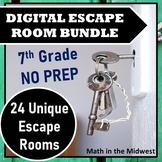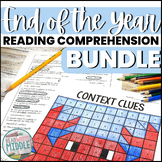395 results
7th grade astronomy laboratories under $5
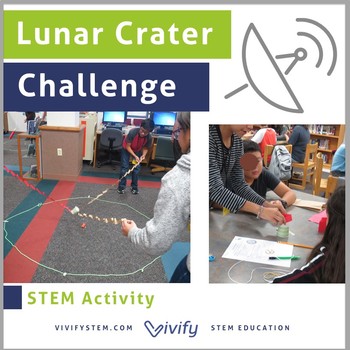
STEM Space Moon Crater Design Challenge (Engineering Design Process)
Can your team of astronauts work together to land a rover in the center of a crater on the Moon? This engaging STEM challenge is a fun way to incorporate the engineering design process into your classroom or afterschool program! Students use the engineering design process and explore the forces of motion to place a ball in a cup at the center of a 6 foot diameter circle without entering the circle. This challenge represents placing a NASA rover into the middle of the Apollo lunar crater for expl
Subjects:
Grades:
4th - 9th, Adult Education
Types:
NGSS:
3-5-ETS1-3
, 3-5-ETS1-1
, 3-5-ETS1-2
Also included in: Space STEM Starter Challenges MEGA Bundle: Middle School

Gravity & Mass Exploration- Activity: Finding WEIGHT & JUMP distances in space!
HOW DOES GRAVITY AFFECT YOU ON OTHER PLANETS?In this engaging activity, students explore how gravity would affect their weight and how far they could jump on other planets (and the Moon). Students first use their weight (or because weight can be a tricky topic the weight of an astronaut listed) to find out how gravity changes weight on other planets (and the Moon). They then find out how far they can jump on Earth by doing a STANDING BROAD JUMP. With this distance they will determine how far tha
Subjects:
Grades:
4th - 9th
Types:
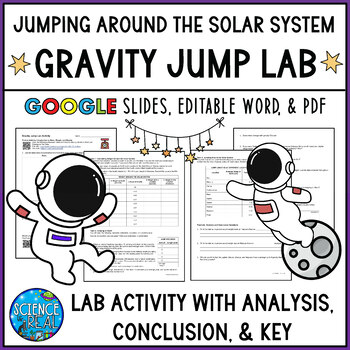
Gravity Lab - Weight, Mass, and Gravity Jump Lab Activity
⭐ ⭐ ⭐ ⭐ A classic fun lab activity made for secondary science students! Editable MS Word, PDF, and Google Slides versions included! Students learn mass, weight, and gravity and then calculate their weight and jump length at various locations in the solar system.⭐ This Lab is Broken Down Into 5 Different Tasks ⭐•Task 1- Pre-Lab: Students watch a short modern video about mass, weight, and gravity, and answer questions.•Task 2 - Weight On Other Planets: Student calculate their weight using the forc
Subjects:
Grades:
7th - 11th
Types:
NGSS:
HS-ESS1-4
, MS-ESS1-2
Also included in: Introduction Astronomy, Gravity, and Kepler's Laws GROWING BUNDLE
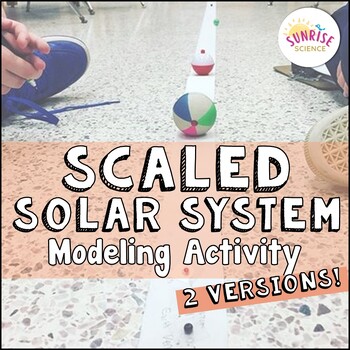
Scaled Solar System Activity: Relative Distances and Sizes of the Planets
For this Scaled Solar System activity, students will work in groups to create a scaled model of the solar system by measuring (and calculating in the case of the more challenging version of this activity) the specific distance to place each "planet" from the "sun". This will help your students understand the relative distances and sizes of the planets while satisfying the visual and kinesthetic learning styles of your middle school students! It also perfectly aligns to the NGSS Standard MS-ESS1-
Subjects:
Grades:
6th - 8th
Types:
NGSS:
MS-ESS1-3

Graphing Ocean Tides Activity NGSS MS-ESS1-2 MS-ESS1-1
Students graph monthly and daily tides from a tide chart and make connections to the moon phases associated with spring and neap tides. This challenging activity helps them to gain a deeper understanding of the relationship between the moon and tides. ⭐ Get this activity at a huge discount in our Moon & Tides Activity Bundle! Lesson Outline: PRACTICE using a tide chart. This familiarizes kids with reading and working with a tide chart. GRAPH the tide chart data for one month. We find it
Subjects:
Grades:
7th - 10th
Types:
NGSS:
HS-ESS1-4
, MS-ESS1-2
, MS-ESS1-1
Also included in: Moon Phases and Ocean Tides Activity BUNDLE NGSS MS-ESS1-1

Tides Lab Using Water Balloons - Hands On Experience That Kids LOVE!
This lab is a really fun way to use discovery and investigation to teach students how gravity and inertia cause tides, along with the moon. The cost is low (a package of water balloons and yarn) and it is a great activity to get kids moving and outside. They work in small groups and go through a series of steps and procedures and record data. This was one of the most fun labs of the year for students and was instrumental is having kids understand why we have high tides on the side of the Earth c
Subjects:
Grades:
6th - 12th
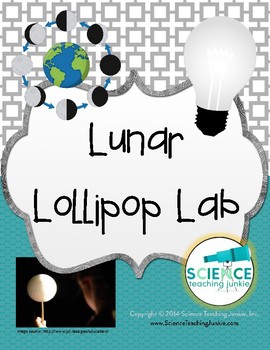
Lunar Lollipop Lab: Discovering Moon Phases
The Lunar Lollipop Lab is a great introductory lab for teaching moon phases because it allows students to visually observe the changing phases of the moon as a result of the relative positions of the Sun, Earth and moon. Don't just teach it...let your students EXPERIENCE it. By the end of the lab, students should understand why/how we have moon phases and should be able to predict the next phase in a sequence.
Each student will hold a moon pop in their hand. The lamp in the center of the roo
Subjects:
Grades:
5th - 10th
Types:
Also included in: Bundle #2 for Kimberly G.
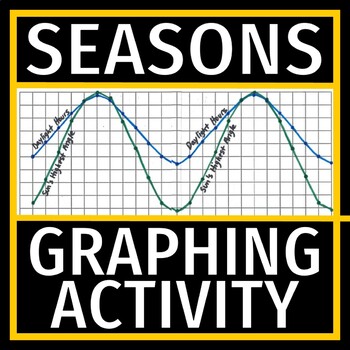
EARTH'S TILT Reason for the SEASONS ACTIVITY Graph Sun Angle and Length of Day
Inquiry-based activity! Provide middle school students a deeper understanding of Earth's seasons through the analysis of a student-generated graph. Clear worksheet instructions, easy-to-graph data, and a nice analysis section combine to make a really worthwhile activity!Objective: Graph the relationship between the seasons and angle of sunlight, as well as the seasons and length of daylight hours. ⭐Get this resource at a discount in our Seasons ACTIVITY BUNDLE!In this activity, students will
Subjects:
Grades:
7th - 10th
Types:
NGSS:
HS-ESS1-4
, MS-ESS2-6
, MS-ESS1-1
Also included in: Earth's Tilt and Reason for the Seasons Activity BUNDLE NGSS MS-ESS1-1
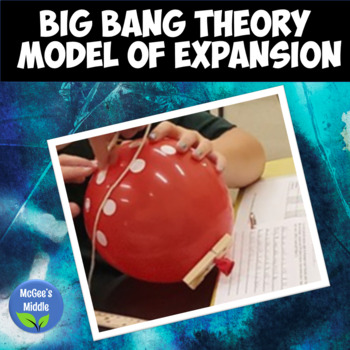
The Big Bang Theory - Expanding Universe Balloon Model Activity (NGSS)
Modeling of the Universe Expanding Activity (Big Bang)Designed for middle school Earth science. This is more of an introductory activity to support additional instruction on the Big Bang Theory. This activity helps students model the expansion of the universe using a balloon. Students record and graph data. Includes:Teacher InstructionsStudent InstructionsLab with data chart (two versions) Graphing PageModel of Graphing PageThis activity was successfully done with Dollar Tree purchases (balloo
Subjects:
Grades:
6th - 8th
Types:
NGSS:
HS-ESS1-1

Crater Catapults and Moon Science STEM
Launch into a deep study of space rocks, the lunar surface, and craters that is sure to leave a lasting impact! In this comprehensive lesson, students use what they learn about meteors and craters to build a catapult that launches “research equipment” into craters. Worksheets are included to guide students through the engineering design process. Then, students create their own satellite with craters like our own Moon. Explanations of the types of craters, crater parts, most famous Earth craters,
Subjects:
Grades:
K - 8th
Types:
Also included in: Space STEM Starter Challenges MEGA Bundle: Elementary Grades
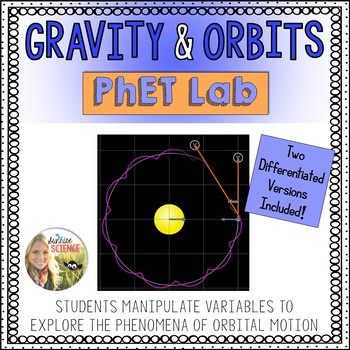
Gravity and Orbits PhET Lab
This virtual PhET Gravity and Orbits simulation lab provides students opportunity to experiment with the variables that affect the force of gravity between two objects and the concept of orbital motion. This inquiry activity can be used in a physical science class while students are exploring motion and gravity. This could also be incorporated during an astronomy unit or even as an inquiry into the concept of gravity alone. There are two differentiated versions of this activity:The green circle
Subjects:
Grades:
7th - 9th
NGSS:
MS-ESS1-2
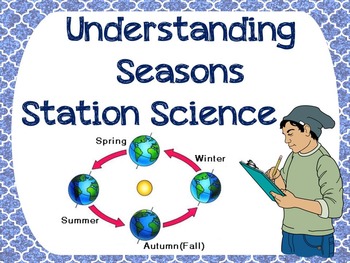
Understanding Seasons Station Science Lab Activities (5) with Simple materials
Looking for easy stations to set up to help your students understand te reason for the seasons- this is it!
This hands on lesson includes five stations to encourage understanding of the position of Earth in each season using simple materials. Analyzing/ thinking questions are included to guide students in the right direction!
Rubric included as well as answer keys and materials and set up instructions.
CHECK OUT the preview!!!
Now part of a HUGE bundle at a great savings!
The Reasons for the
Subjects:
Grades:
5th - 8th
Types:
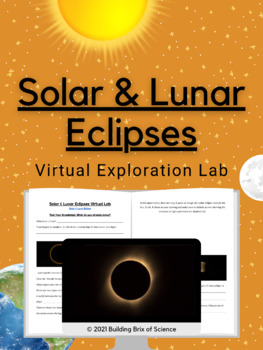
Solar & Lunar Eclipses Virtual Exploration Lab
What is the difference between a Solar and Lunar eclipse? In this virtual lab, students will manipulate the Earth & Moon to determine what causes an eclipse. Students will also:⚗️Test their Pre-Existing Knowledge of an Eclipse⚗️Identify the Lunar Phases that occur during Eclipses⚗️Draw Diagrams of a Solar & Lunar Eclipse⚗️Compare & Contrast Partial and Total EclipsesNOTE: This activity links to the free Interactive from Earth Space Lab. Check it out below!Solar & Lunar EclipsesPu
Subjects:
Grades:
6th - 12th
Types:
NGSS:
MS-ESS1-1
Also included in: Virtual Science Labs Full Exploration Activity Bundle
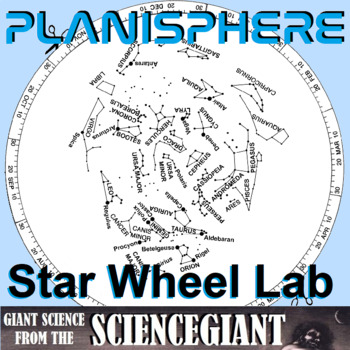
Planisphere Lab Activity: A Star Wheel for Constellation Exploration
Inexpensive and ingenious! Planispheres are a unique tool for learning astronomy: a make-it-yourself star map, adjustable for any time of night in any month of the year. They are designed to show the position of prominent constellations in the night sky. It's a low-tech way for Ss to learn the location (and thus give meaning to key vocabulary terms) of the horizon, zenith, meridian, ecliptic and celestial equator on the celestial sphere. This lab includes two types of planispheres: one for stan
Subjects:
Grades:
6th - 12th, Higher Education
Types:
NGSS:
HS-ESS1-4
, 5-ESS1-2
, MS-ESS1-1
Also included in: StayGiant Earth Science Bundle: Astronomy (space exploration)
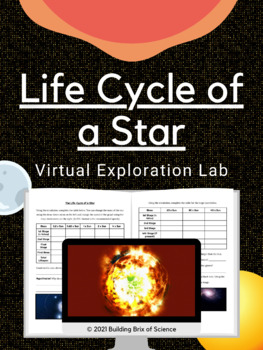
Life Cycle of a Star Virtual Exploration Lab
What are the stages of a star's life? In this virtual lab, students will use mathematical data to analyze the life cycles of different stars based on their initial mass. Students will also:⚗️Test their Pre-Existing Knowledge of Stars⚗️Analyze the Fusion of Hydrogen Atoms into Helium⚗️Explain the Correlation between a Star's Mass and its' Age⚗️Investigate the Formation of Neutron Stars & Black HolesNOTE: This activity links to the Star in the Box Simulation from Las Cumbres University. Check
Subjects:
Grades:
6th - 12th
Types:
NGSS:
HS-ESS1-3
, HS-ESS1-1
Also included in: Virtual Science Labs Full Exploration Activity Bundle
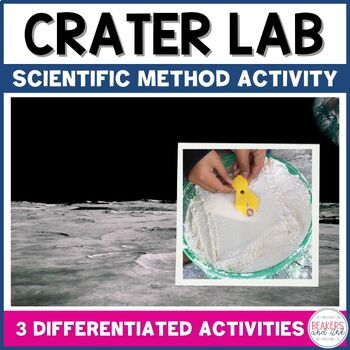
Moon Crater Lab Scientific Method Investigation
Your students are going to LOVE investigating the scientific method with this moon crater lab. Students will use the scientific method to investigate the effect of meteors landing on the moon. Three differentiated labs are provided to investigate impact craters. Students will have the choice to investigate the effect speed, size and angle of meteor impact on the size of the crater. Leveled worksheets and an answer key are provided. Check out the preview on the product page for an up-close
Subjects:
Grades:
5th - 7th
Types:
Also included in: Scientific Method Activity Lab Bundle
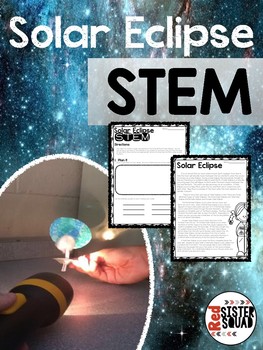
Solar Eclipse STEM
This interactive, engaging package gives the students an opportunity to learn about the three different types of Solar Eclipses and the Total Solar Eclipse we are about to experience on August 21! The reading passage breaks down each type of solar eclipse; Partial Eclipse, Total Solar Eclipse, and Annular Solar Eclipse. This package also includes a hands-on STEM challenge were the students have the opportunity to create a model of a solar eclipse.
Materials Needed: (These are suggested mat
Subjects:
Grades:
3rd - 9th
Types:
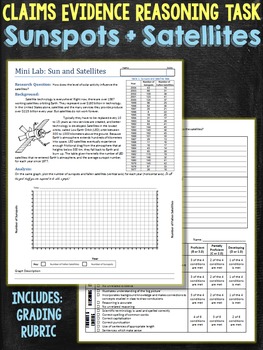
Lab Activity Effect of Sunspots on Satellites (Claims Evidence Reasoning Task)
A short lab activity for astronomy or earth space science. Students make a double line graph of the number of sunspots and the number of crashed satellites in a given year. Then they look for patterns and write a science conclusion utilizing claim, evidence, reasoning scaffolding framework.
Grading rubric and sample student responses are included
This lab activity blends well into a unit on electromagnetic waves, planetary mechanics, or the Sun's influence on Earth.
Subjects:
Grades:
7th - 12th, Higher Education
Types:

Lab: Solar System in the Hallway
This lab will help students to better understand the scale of the solar system. Many students have the misconception that the planets are the same distance from one another! They're not! This lab also shows students just how small the Sun could appear to be from another planet's perspective.With this lab activity, students will first use the Power Point to start their 'lab write-up'. When the written portion of their lab is complete, they will break into separate groups, and move into the hallwa
Subjects:
Grades:
5th - 8th
Also included in: Bundle: Astronomy Bundle
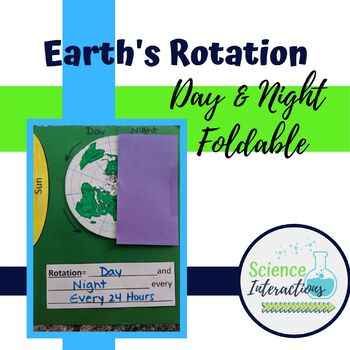
Earth's Rotation, Day and Night Interactive Notebook Foldable
This piece requires a copper brad paper fastener. It depicts the relationship between the Sun and Earth and day and night. I add a piece of black construction paper that flips open over the half of Earth away from the sun to show nighttime. Please follow my store to see other interactive science activities.Other products you might like:Earth's Rotation and Revolution BundleClay Stresses: Exploring Tectonic Plate Boundaries LabExploring Earth's Magnetic Field LabSoda Can Gravity LabMoon Phases, E
Subjects:
Grades:
4th - 8th
Also included in: Earth, Sun, Moon Bundle: Rotation and Revolution Interactive Notes
![Preview of The Case of Space (NGSS Aligned) [creating a scale model of solar system]](https://ecdn.teacherspayteachers.com/thumbitem/The-Case-of-Space-NGSS-Aligned-creating-a-scale-model-of-solar-system--3566228-1667250305/original-3566228-1.jpg)
The Case of Space (NGSS Aligned) [creating a scale model of solar system]
To successfully meet the above Next Generations Science Standard MS-ESS1-3, students must understand how to compare the enormous sizes of planets and the distances involved. Students must also have at least a basic understanding of scale and proportion. The lesson includes hands-on, group work, and the use of technology to explore the scale properties of space and the enormous amount of space in space. Also included:The Case of Space Pre-ActivityEssential Questions Materials:Adding Machine tape
Subjects:
Grades:
6th - 8th
Types:
Also included in: Astronomy Bundle NGSS MS-ESS1
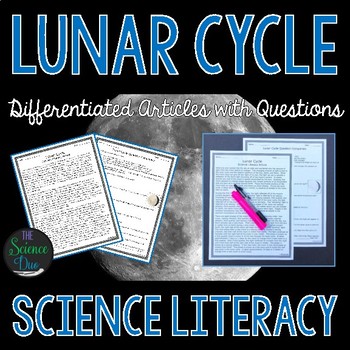
Lunar Cycle Science Literacy Article - Distance Learning Compatible
This Lunar Cycle and Moon Phases Science Literacy Article will help to support important science content and reading comprehension for every single one of your students. This resource is a "game-changer" for incorporating cross-curricular activities into your science classroom! This resource comes with 2 different versions of the article (regular and modified). The modified version is perfect for students with modifications or accommodations, ESL or ELL students, or lower-level readers. We hav
Subjects:
Grades:
5th - 9th
Types:
Also included in: Science Literacy Bundle - Science Reading Articles
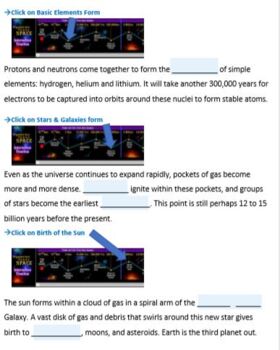
Big Bang Evidence: Red Shift - Virtual Lab Simulation
NO FLASH NEEDED! Students will explore the early steps of the Big Bang and then prove the Universe is expanding by manipulating the light of a galaxy moving away from or towards Earth. This virtual lab is excellent for remote or in-class laboratory exploration. The virtual lab simulation worksheet contains auto-fill in blanks, so no annotation software is needed. The links for the free sites used are located within the lab.
Subjects:
Grades:
6th - 11th
Types:
CCSS:
NGSS:
MS-ESS1-4
, MS-ESS1-2
, MS-ESS1-3
, HS-ESS1-2
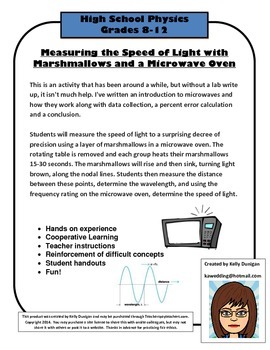
Measuring the Speed of Light: Marshmallows and Microwaves
This is an activity that has been around a while, but without a lab write up, it isn't much help. I've written an introduction to microwaves and how they work along with data collection, a percent error calculation and a conclusion.
Students will measure the speed of light to a surprising decree of precision using a layer of marshmallows in a microwave oven. The rotating table is removed and each group heats their marshmallows 15-30 seconds. The marshmallows will rise and then sink, turning
Subjects:
Grades:
7th - 12th, Higher Education
Types:
Showing 1-24 of 395 results





